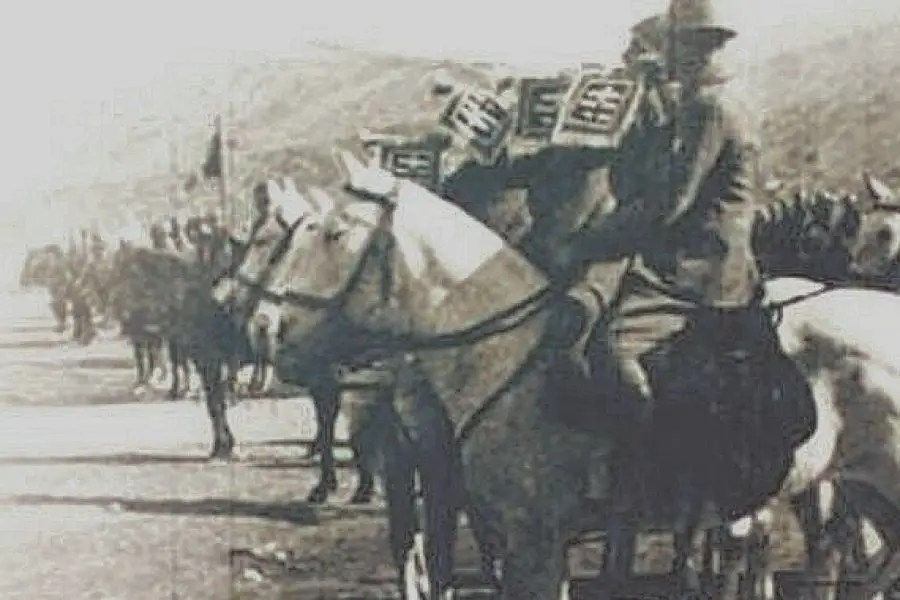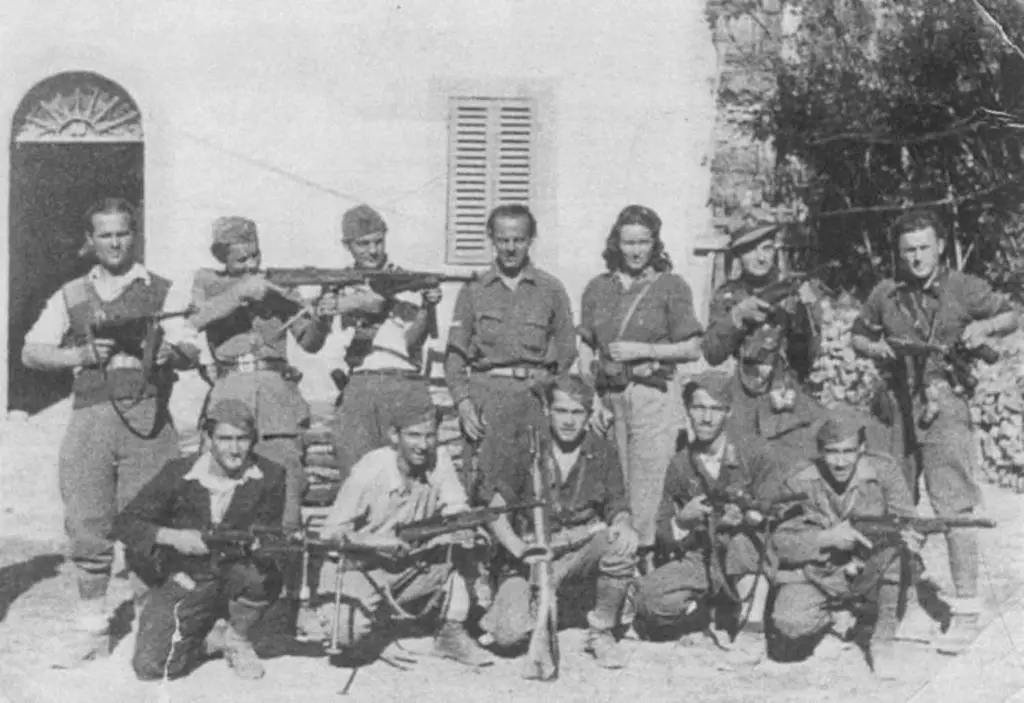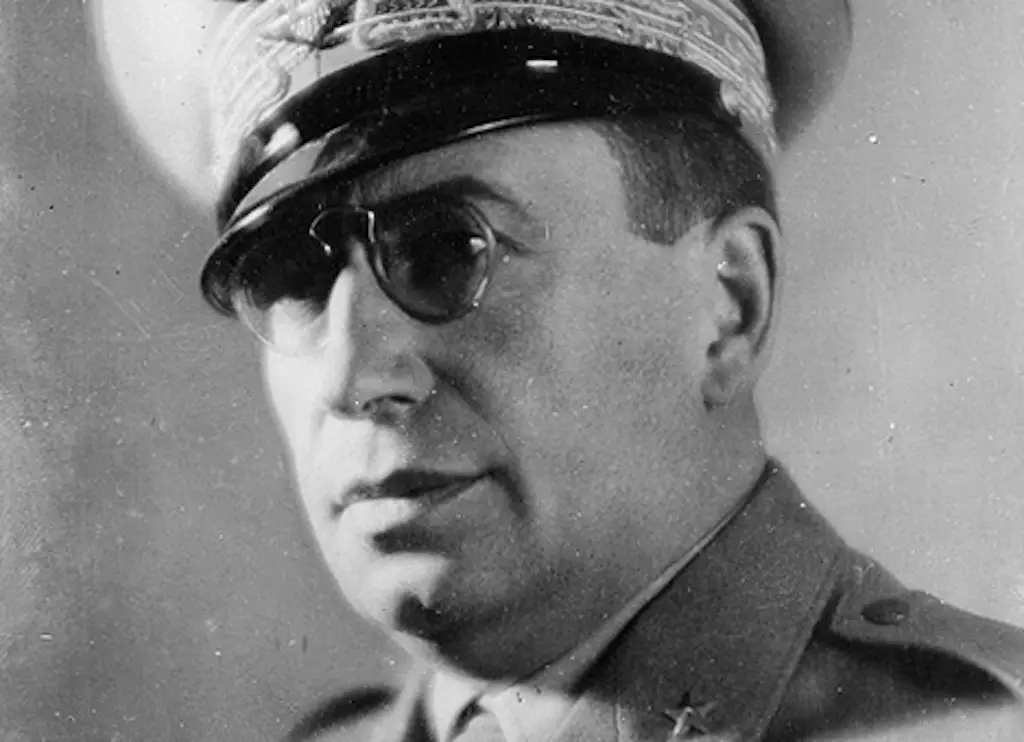The Poloj Charge occurred on 17 October 1942 in Croatia. The 14th Light Cavalry Regiment “Cavalleggeri di Alessandria” charged a group of People’s Liberation Army of Yugoslavia partisans. It was the last Italian cavalry charge of World War Two.
The Scene
The location is central Croatia, near Poloj. The time is 1800 hours. Colonel Antonio Ajmone-Cat, Commander of the 14th Regiment “Cavalleggeri di Alessandria,” is waiting. The situation is complicated. The 2nd and 4th partisan assault brigade took possession of the hills and attempting to surround the Italians on their way to Perjasica.
The Colonel is confident, settling on defenses along the q.243 and q.249 lines. They rest on the road leading to Opacici. He is holding a central position. He can operate on the interior lines, using the support of the 3rd squadron of L3 tanks of Group San Giusto. The Colonel will deploy the artillery section of the 23rd Regiment of the “Re” Division (4-75 mm guns) against enemy forces stationed between q.317 (Vecjliaca) and q.258 (Dolvy Visoska). This maneuver will oblige the enemy to come down from the heights to attack.
By 1515 hours, the 1st Squadron, avant-garde, obtained forward and flanked attacks. It was the intervention of the San Giusto, which allowed them an escape and return to the others. As the radio connection was interrupted, Ajmone-Cat sent a dispatch to Deputy Commander General Mazza of the 1st Division Celere “Eugenio di Savoia,” to whom the Regiment belonged. He ordered the 81° Battalion CC.NN. to attack. However, the larger and well organized partisan force took over, preventing a reunification.
Major Sallusti, Chief of Staff of the 1st Division Celere, arrived to confirm the order to move forward to Primislje. It is the same order as the day before when the detachment was attacked at the bridge over the river Korava near Veljun at q.307, forcing them to return to base. But Sallusti had to think again and consult with Division Commander General Lomaglio.
Background and the Cavalleggeri di Alessandria
The Regiment “Cavalleggeri di Alessandria,” already distinguished in the Risorgimento wars of 1859 and 1866, was part of the General Lomaglio’s 1st Division Celere “Eugenio di Savoia,” of General Federico Ferrari –Orsi’s Celere Army Corps. And also part of General Ambrosio’s 2nd Army, that invaded Yugoslavia.

The Cavalleggeri di Alessandria in Croatia, October 1942.
On Easter Day, 13 April 1941, the Regiment crossed the border north of the river following the carriage road for Kupjak under heavy rain. The 3 Celere Divisions reached Delnice, Lokve, and Zelesina. On 15 April, they arrived at Gomirje, Cakovac, and Vrbovsko. Two days later, they flanked the Yugoslav rearguards.
During the first weeks, “Cavalleggeri di Alessandria” was garrisoned at Karlovac, southwest of Zagreb, which was the Headquarters of the Army Corps and Divisions. But because of the establishment of a robust partisan movement and the difficulties of the young Croatian State to take control, additional duties became imposed.
Anti-Partisan Warfare
The intense anti-partisan action carried out in Serbia by German troops lead to problems in preventing or limiting the possibility of guerrillas taking refuge in the northwest. Between October and November 1941, the 1st Division passed under the control of the V Corps. The Division took part in the occupation of the area between the demilitarized zone and the border with the area under German occupation.
It was unconventional warfare, difficult and bloody for both sides. It included reprisals, hostage-taking, and contenders of questionable loyalty.

Yugoslavian partisans.
At the beginning of 1942, the 1st Celere Division transferred to Karlovac for counterinsurgency actions and a sweep of the nearby mountains. These units were ideal for anti-partisan operations. The Germans themselves employed Waffen SS and several regiments from Wehrmacht on the Eastern Front. They also made extensive use of mounted units against the partisans in the Balkans, mainly because of their high mobility in challenging environmental conditions.
In early October 1942, the Infantry Divisions “Lombardia” and “Cacciatori delle Alpi” transferred from Dalmatia under XI Corps to the area between Ogulin and Vinica. Their mission was to flush out partisan divisions attacking between Ogulin and Vinica. Skirmishes on 6 October 1942 proved inconclusive, with little more than an exchange of artillery fire. However, surveillance in the area of Perjasica on the 12th and 13th led to speculation that the whole area could have up to several thousand partisans.
At 1800 hours, Ajmone-Cat, facing opposition in the front and sides, remained entrenched with the approval of General Mazza. But the withdrawal order came directly from General Lomaglio, who may have underestimated the incipient darkness, time and weight of their equipment.
The Poloj Cavalry Charge
Ajmone-Cat was at the head of the detachment, trying to open the way to the northwest for about 1.5 km and then turn right towards Perjasica. As recalled by 3rd Squadron Lieutenant Raffaele Arcella:
“The Alessandria found itself almost closed in a vice (…) The speed and the surprise limited the damages, but out of 700 men, 10% died.”

Poloj Charge
In Poloj, the enemy attacked with violent gunfire and grenades. “Partisans inserted hand grenades triggered on iron cords through the trees,” says Arcella, “Crafty traps, but deadly.”
The unit formed a diamond shape. The diamond included the 1st Squadron at the head, the 3rd to the left, and the 2nd to the right. In the center, the Machine Gun Squadron and Command Squadron. The 4th protected the tail section of artillery.
1st Squadron Capt. Antonio Petroni launched the charge. The center and the flanks soon followed. The 2nd Squadron, losing its commander, Lieutenant. A. Alciator, and the 4th Squadron, made three charges towards the south. This charge left only 20 men to protect the artillery. Commander Captain Vinaccia rushed to the head of the unit fighting the enemy but was never seen again (earning him a Silver Medal for Valor). After crossing the first out of three barriers, Capt. Petroni was struck in the chest and face just as he approached the second barrier (earning him a Silver Medal for Valor).
After gathering all the survivors, Ajmone-Cat stood at the head. He led the group over the third barrier obstacle. The battle left the 4th Squadron practically destroyed and the loss of the battery. But at 0100 hours on the 18th, the detachment arrived at Prjasica.
Outcome of Battle
Cavalry losses included 70 dead and 61 injured, one dead and 12 missing for the artillery, four killed and 30 wounded among the CC.NN., as well as the loss of 75 mm guns. The partisans retained a high regard for this battle, even after the war. They claimed to seize 33 Italian prisoners, an L3, two guns, seven trucks, nine machine guns, 122 rifles. They also claimed only five killed and eight injured.
The above data is somewhat doubtful and probably unverifiable. But the local population of that area agrees this event was a bloody struggle for the partisans too. This belief was reaffirmed by an Italian mission interviewing local citizens regarding this event approximately ten years later. They buried the dead in mass graves. However, a minority of recognized and recovered bodies received a funeral and burial service at a cemetery in Karlovac on 2 November.

General Mario Roatta.
During a meeting with fellow commanders following this event, General Mario Roatta, Commander of the 2nd Army, made no mention of Lomaglio’s orders. Instead, he wished to remember the value of the men and the glory of Poloj ’s charge. Among other losses, 2 out of 4 squadron commanders died. Ajmone-Cat believed they could have avoided part of the losses if they waited just another day.
Yugoslav partisan leader Josep Tito stated the following about the Poloj Cavalry Charge:
“We had the honor of engaging the Cavalleggeri di Alessandria.”
During the next few months, the Regiment engaged in counterinsurgency operations with the 12th Regiment “Cavalleggeri di Saluzzo.” From January to February 1943, they were in the Vodice area. In May 1943, they were in Gobjik territory with the “Re” Infantry Division. After the armistice, the 1st Celere Division returned to Italy, dissolving on 13 September 1943.
A Little Known, but Historic Charge
The Poloj charge was the last Italian cavalry charge. Although it cost them their artillery and a cavalry squadron, it should still be considered a success. Most of the detachment arrived safely in Perjasica. Compared to the Isbuscenskij cavalry charge the previous August, the Poloj cavalry charge was carried out against partisan forces and not regular deployed units, thus preventing a complete tactical victory. Perhaps this is the reason why it remains little known to the general public.
Translation by Alessandra Gualtieri